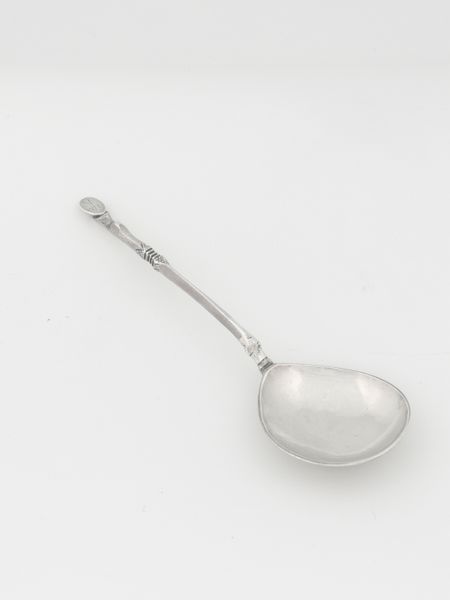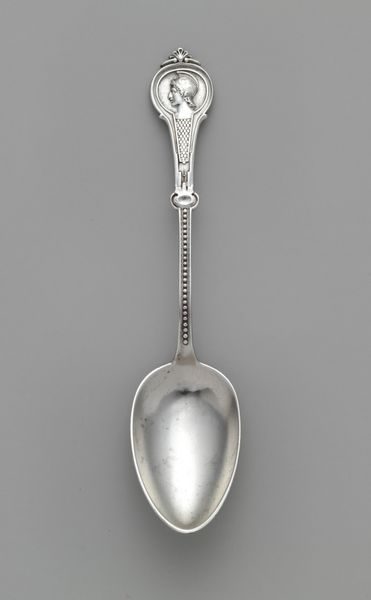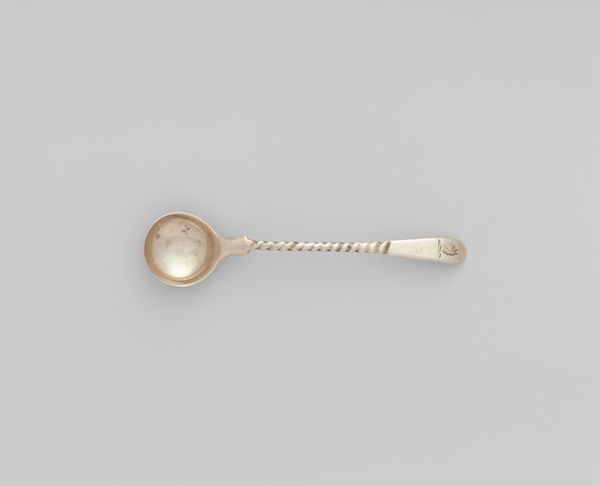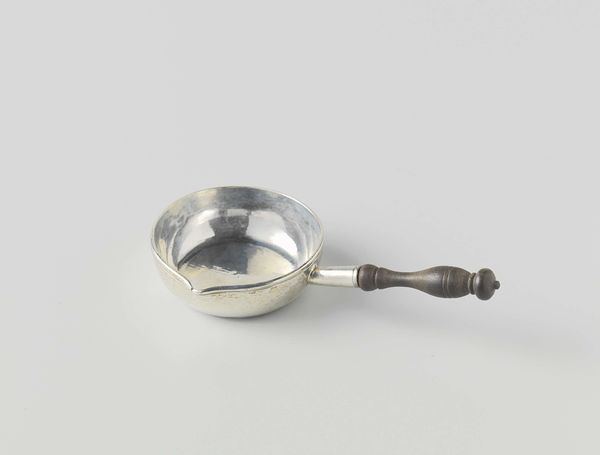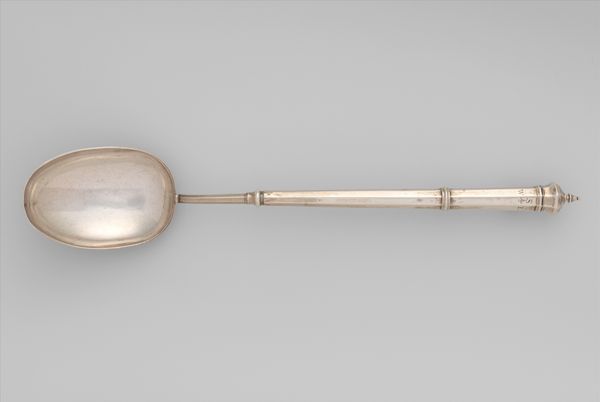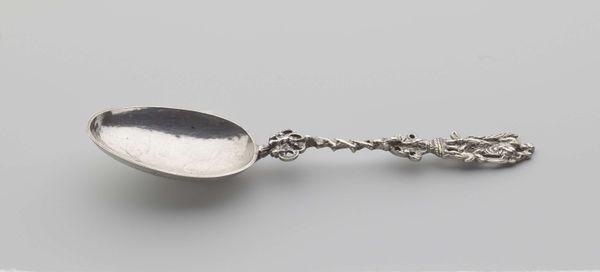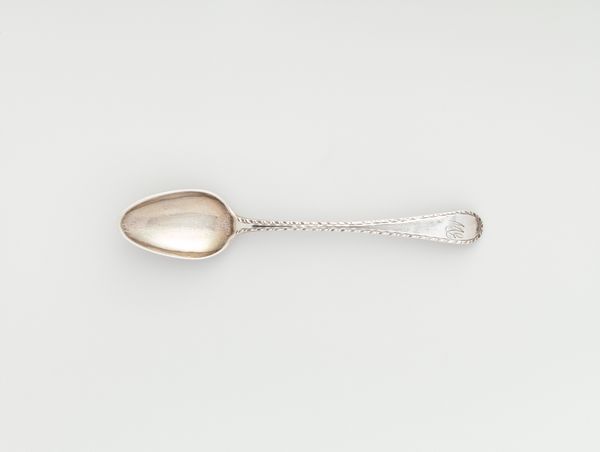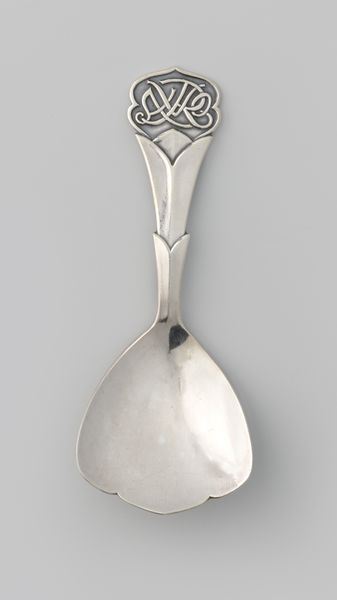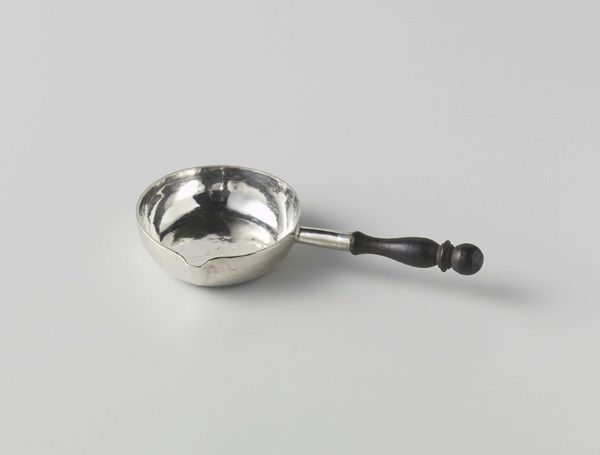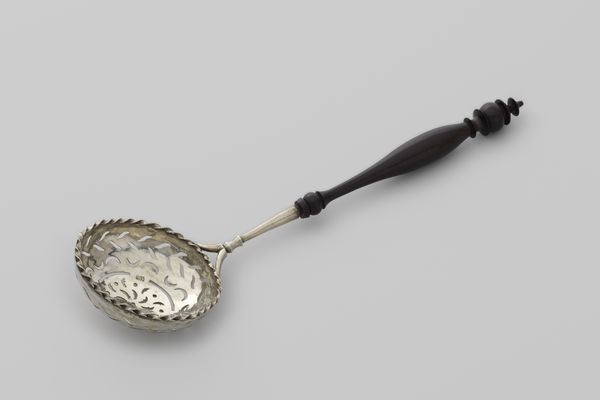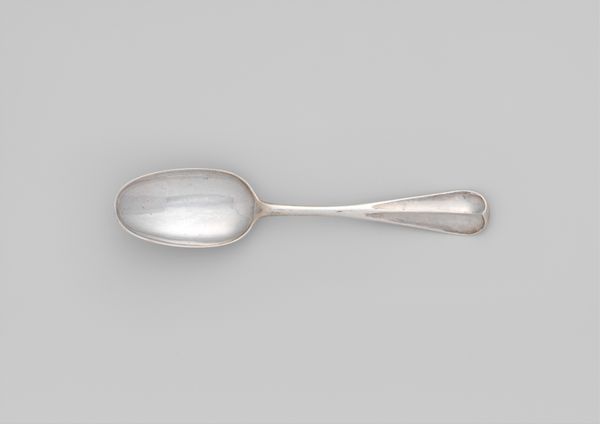
silver, metal
#
silver
#
metal
Dimensions: 4 3/4 × 2 in. (12.1 × 5.1 cm)
Copyright: Public Domain
Editor: Here we have a silver spoon, made sometime between 1900 and 1910 by Theodore B. Starr. The handle seems unusually decorative for such a simple utensil. What compositional elements stand out to you? Curator: The piece exemplifies a careful balance between utility and adornment. Notice how the circular bowl provides a stark contrast to the linear, geometrically patterned handle. The craftsmanship employed in the silver work itself is of primary interest. Editor: Could you expand on the geometrical pattern of the handle? Curator: Certainly. We can see a deliberate repetition of curvilinear forms interspersed with diamond shapes, creating a textured rhythm. The negative space carved out of the handle is also notable. These excised spaces articulate and thereby emphasize the crafted, precious objectness of the spoon, making it all the more captivating. Do you agree? Editor: I do. The repetition is not monotonous; it almost feels like a visual echo, and the pierced decoration allows the light to interact with the form, accentuating the silverware's materiality. I didn’t consider how this detail influences one's appreciation of this spoon. Curator: Exactly. And beyond its visual texture, think of the tactile dimension as well. These negative spaces along the handle make for a different feel. It makes us further aware of the spoon as a distinct object, removed from its purely functional purpose. Editor: It’s amazing how much information is conveyed simply through the structure and form. Curator: Indeed. Through careful consideration of form, we reveal its function, its making, and what is emphasized from there.
Comments
No comments
Be the first to comment and join the conversation on the ultimate creative platform.
